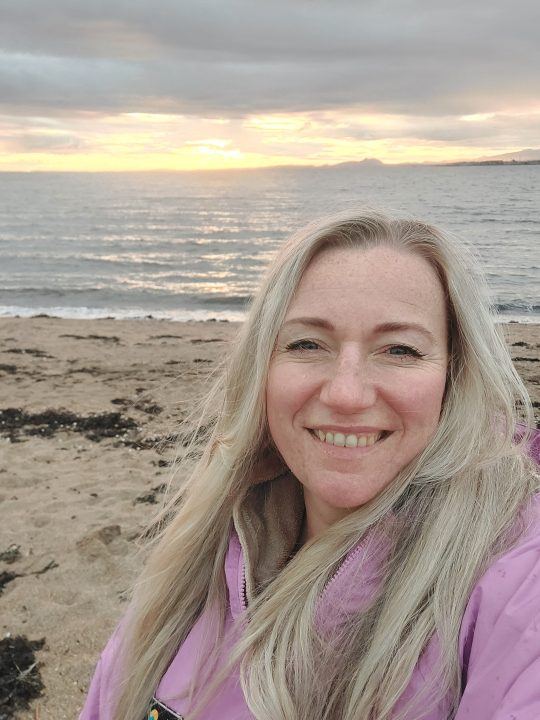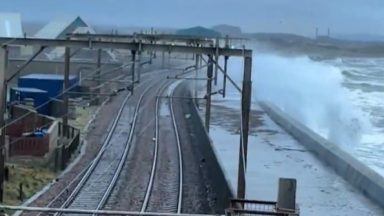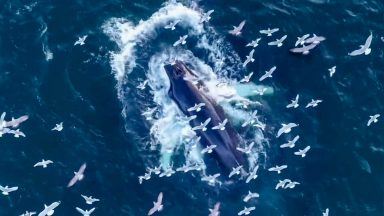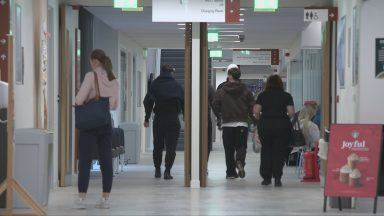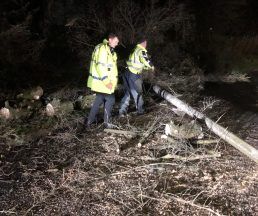Shelley Sim woke up with stomach pains and fatigue after taking a dip in the sea to celebrate a friend’s birthday last year.
The East Lothian-based carer was told by her GP to urgently get to hospital, where she stayed for five days with severe gastroenteritis and dehydration.
Shelley, who is a member of the swim group Salty Sisters, underwent several weeks of appointments that led to a final diagnosis of cryptosporidium – a diarrheal disease contracted by swimming in contaminated water.
Shelley said: “I’m no longer swimming every day, and I’m more cautious about getting into the water. The sea is where I go for my mental health, to get away from stress of being a carer.
“The first thing I do now is check outfalls. That’s good, but it comes from a place of fear. I shouldn’t be doing this. I should be checking the tide, not when was it heavy rain and if there were any spills.
“It impacted my son’s mental health. He has OCD, ADHD and autism and I’m his carer. My illness caused a lot of anxieties and stress.”
Sewage may have been dumped in Scots waterways every 90 seconds in 2024
Shelley was speaking as a new report showed the true extent of Scottish Water’s sewage pollution could be as high as 364,629 sewage discharges in 2024, due to missing data
The report by Surfers Against Sewage (SAS) highlighted the many financial, environmental and public health failures of the water industry in Scotland and across the wider UK.
It showed that:
- In 2024, Scottish Water recorded 23,498 discharges for a total of 208,377 hours. Yet these figures are only from 6.7% of the total network.
- Scottish Water’s missing data means the true number of sewage discharges is unknown, but SAS estimates that it could be as high as 364,629 discharges, an average of more than one discharge every 90 seconds.
- SAS’s annual Water Quality Report reveals that Scottish Water cannot be trusted to report on its own sewage discharges in real time having failed to do so for 73% of sewage discharges last year.
SAS said its annual Water Quality Report highlighted that Scottish Water recorded 23,498 discharges for a total of 208,377 hours in 2024. However, it claims those figures only account for 6.7% of Scottish Water’s total network due to weak regulations and missing data.
SAS found that Scottish Water has the highest average discharge rate, at 89.3 discharges per CSO (combined sewage outflow), of any water company in the UK.
Giles Bristow, CEO of Surfers Against Sewage, said: “These sewage figures are appalling, and yet they are likely just the tip of the fatberg, due to Scottish Water’s reckless approach to monitoring and public safety.
“Scotland’s coastline, lochs and rivers are some of the most stunning on the planet, with surfers, swimmers and paddleboarders wanting to make the most of these beautiful blue spaces. But these waters are far from pristine.
“With no legal requirement to issue sewage alerts in Scotland, water users have no idea whether or not it’s safe to enter the water. People are getting sick and yet Scottish Water are standing idly by, happy to sweep the scale of the sewage scandal in its waters under the carpet.
“SAS provides sewage alerts via the Safer Seas and Rivers Service in England and Wales, however, Scottish Water’s inaction will mean the Scottish map will remain blank this year, with surfers and swimmers gambling with their health each time they dive in.
“Scottish Water: You’re polluting your incredible wild waters and leaving the public in the dark, and at risk. It’s time to step up and provide real-time sewage alerts and dramatically improve your woefully inadequate monitoring.”
Surfers Against Sewage is coordinating a UK-wide day of action for its Paddle Out Protest on Saturday, May 17, with events due to take place across the length and breadth of the UK.
Scottish Water publishes its reported and unreported overflow data annually on its website and the firm says it is on track to deliver on its commitments to prevent pollution incidents.
Professor Simon Parsons, director of environment, planning and assurance for Scottish Water, said: “The quality of Scotland’s water environment remains high, with 87% of water bodies classed as good or better.
“We continue to invest in infrastructure – £500m in addition to the £2bn spent in the last decade – which helps improve it further to meet national targets.
“Our waste water treatment systems handle more than one billion litres of waste water every day and are a vital part of the water cycle in Scotland.
“The route map we published in 2021 set out a crystal-clear commitment to invest further, monitor performance at more locations and strive to prevent pollution incidents before these happen. We are on track to deliver on those commitments.”
The Scottish Environment Protection Agency (SEPA) publishes daily water quality predictions during the bathing season.
The general advice all year round is to remember that heavy rainfall can impact water quality.
Diluted sewage from overflows is not the only source of bacteria in water bodies. Others include run-off from land (agricultural, cows, sheep etc), wildlife (gulls, seals etc) and dogs (owners not picking up after their pets).
David Harley, acting chief officer for regulation, business and environment at SEPA said: “Following two decades of targeted regulation driving investment, 87% of bathing waters across Scotland are classified as Excellent or Good.
“As Scotland’s principal environmental regulator, SEPA routinely analyses water quality during the bathing water season at all of Scotland’s 89 designated bathing water sites to protect human health.
“When sample results show unexpectedly high bacterial levels, SEPA issue advice against bathing on a precautionary basis while investigating, so people can make informed decisions about entering the water.
“In tandem with environmental monitoring, SEPA work with operators and stakeholders across the country to direct action, including millions of pounds of investment, to improve bathing water quality.
“However, we recognise that more needs to be done. SEPA required Scottish Water to produce the Improving Urban Waters Route Map, which details the environmental improvement and monitoring actions required of Scottish Water in relation to Combined Sewer Overflows (CSOs).
“We are pleased that Scottish Water met the obligation to install 1,000 monitors by the December 2024 deadline. Near real-time reporting of all CSOs spills within 2km of all Bathing Waters and shellfish waters will be available to the public before the upcoming bathing water season.
“The Route Map also requires a number of high risk CSO to be improved by 2027 and we will hold Scottish Water to account on this commitment.
“Protecting and improving our bathing waters is crucial for water users, local economies, and communities. While we celebrate the improvements made so far, we are not complacent.
“We will continue our work to ensure these improvements are sustained and where necessary further improvements are made, so people can enjoy our bathing waters now and in the future.”
Follow STV News on WhatsApp
Scan the QR code on your mobile device for all the latest news from around the country


